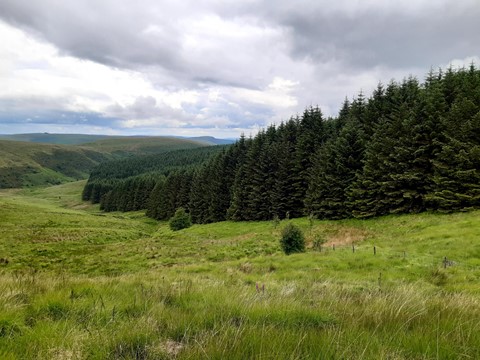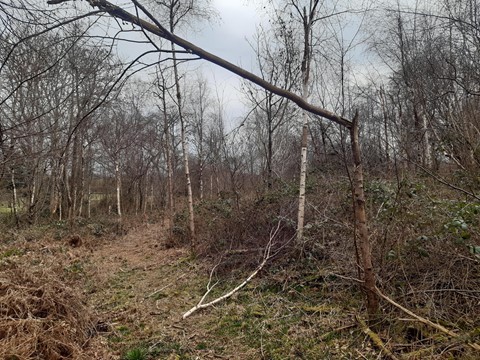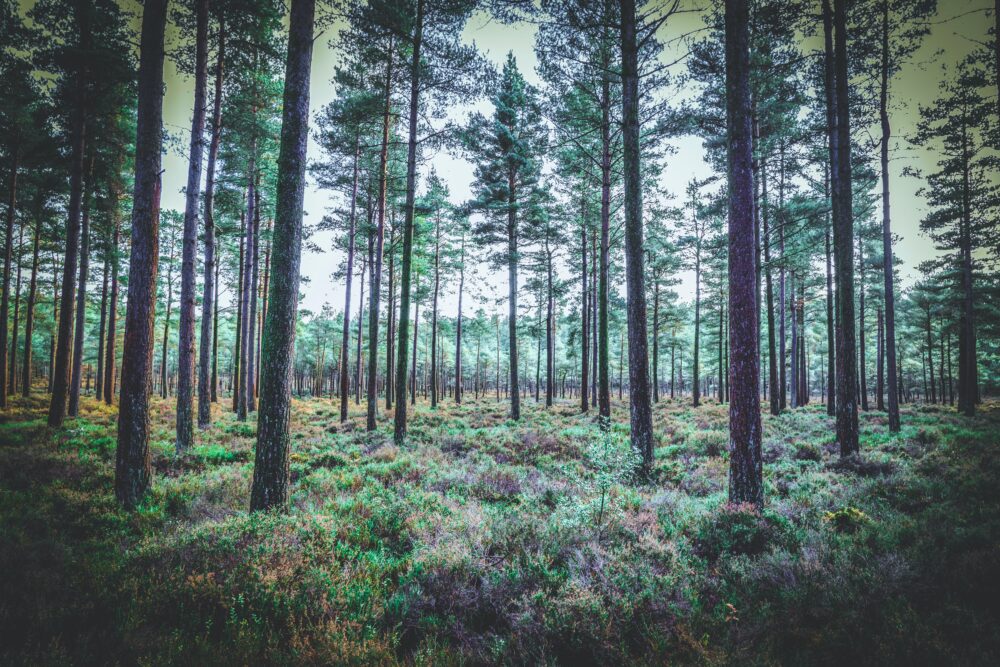Restock Area and Beat Up Planting

Productive conifer forest
I then walked the restock area, checking the beat-up planting undertaken by the contractor. Beating up is planting the gaps where restock trees from the previous year have failed. The planting had been undertaken to a high standard and trees were well heeled in. In some places the new trees were showing some chlorosis, which will be something to keep an eye on. Before leaving I was lucky enough to watch a pair of Goldcrests hopping about on a spruce about six feet away from me before they made their way back into the plantation. The Goldcrest is one of our smallest birds and despite its diminutive weight one that I think is full of character.
Grey Squirrel Damage

Ring barking can be seen in the picture, as can the possible subsequent impact.
Following this I visited a smaller mixed broadleaved plantation that had unfortunately been damaged by grey squirrels.
They can damage a tree by gnawing away the bark round the trunk, known as ‘ring barking.’ A pest control regime has been put in place on the site and this has been working well so far. As part of this I filled a feeder with grain that is used
as a bait station for the squirrels. If the squirrels are not controlled, then further damage will occur and the stand may fail to establish minimising the opportunity for timber or the environmental benefits that excellent quality native woodlands can provide. Whilst on site I had a quick walk around and did not find any new squirrel damage, so the approach seems to be working.
Species Choice: Right Tree in the Right Place
I had one last site visit for the day, to meet a tree delivery, from Maelor Forest Nurseries to our client’s site in order to restock where it had recently been partially felled to produce a high proportion of very good quality Norway Spruce sawlogs. These were destined for the local mill to process the timber to produce building materials and garden fencing.
I met the delivery driver and unloaded the trees at each of the planting sites. The species of choice this time was Sitka spruce, it is being planted on mounds on the more exposed part of the site and Douglas fir is to be directly planted in brash raked areas at lower elevation. Broadleaves are located along a riparian corridor and being planted in tree shelters.
Part of the site is of suitable elevation, aspect, and soil quality for Douglas fir whilst on the more exposed part of the site Sitka spruce should be more resistant to wind, whilst still demonstrating strong growth rates. The species choices ensure ‘the right tree in the right place’.
With muddy hands, washed, it was time to drive home and catch up on a few emails before finishing for the day.
A Blog by Christian Tyroll




